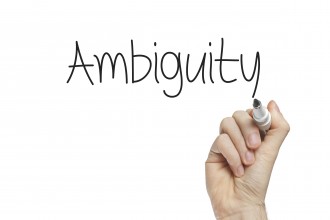November 9, 2015
Lessons Learned from a Rare CAFC Opinion on an IPR Matter
To date, the Federal Circuit has issued Rule 36 affirmances in over 80% of the cases it has heard. Thus, when a new, substantive opinion is issued by the Court, it is an opportunity to learn. On November 5th, the Federal Circuit issued an opinion in Belden Inc. v. Berk-Tek LLC, relating to the Final Written Decision issued in IPR2014-00057. The Federal Circuit affirmed the Board’s decision that claims 1-4 were determined to be unpatentable and reversed the Board’s decision that claims 5 and 6 were not determined to be unpatentable. It was a rough decision for the Patent Owner and some key lessons can be learned from the Court’s analysis:
The Board Can Rely on its Own Reading of the Prior Art: Despite the fact that the Petition was unaccompanied by expert testimony, the Court gave deference to the Board’s determination that claims 1 and 4 were obvious because those findings were supported by substantial evidence. Op. at 12-14. In so doing, the Court noted the discretion the Board can exercise in this type of case: “In the circumstances here, involving a simple point in a mechanical field and one very close piece of prior art, the Board was entitled to rely on its own reading of [the prior art]–supported by the Petition’s observations about it–to find that a skilled artisan would have understood the importance of [the key reference]”. Id. at 14. Thus, although the Petition only briefly addressed this key issue, the Board’s own view of the art can overcome such a shortcoming of the Petition.
Rationale to Combine Must Be Based on More than a General Statement: In affirming the unpatentability of claims 2 and 3, the Court noted that the Board made the correct inquiry regarding why a skilled artisan would have had reason to combine the prior art references at issue. Referencing the Board’s recitation of the KSR decision, the Court stated that “[t]he Supreme Court’s passage does not establish that it suffices for obviousness that a variation of the prior art would predictably work, but requires consideration of whether, in light of factors such as ‘design incentives and other market forces,’ the hypothetical skilled artisan would recognize the potential benefits and pursue the variation.” Op. at 15.
Broad Teaching in the Prior Art Can Provide Rationale to Combine: Relative to the decision to reverse the Board regarding the patentability of Claims 5 and 6, the Court found that the Board did not given sufficient weight to the teaching of the prior art and, instead, focused to much on the particular invention it was describing and attempted to protect. Id. at 18. Dismissing the other arguments from the Board to support patentability, the Court decided that, even in view of the substantial evidence deference afforded to the Board on factual issues, “the record is one-sided on the proper question of whether [the first prior art reference] taught a solution to the problem…that a skilled artisan would have been motivated to use in making [the disclosed product from the second prior art reference].” Id. at 20.
The PTAB, because of its Expertise, Does Not Always Need Expert Assistance to Understand Prior Art:Patent Owner argued that the evidence provided in Petitioner’s reply brief, in the form of expert testimony, was necessary to establish a prima facie case of obviousness. The Federal Circuit disagreed, finding that (1) the testimony was responsive to issues raised in the Patent Owner Response (i.e., each point from the declarant responded to a statement from Patent Owner’s declarant), and (2) the evidence was not needed to make out aprima facie case of obviousness. Although the Board often cited to the expert declaration, that did not mean the testimony was necessary for a prima facie case of obviousness. Op. at 23. The Federal Circuit concluded that the prior art itself contained all the information necessary to make out a prima facie case, especially in view of the Board’s technical expertise.
New Expert Testimony in the Petitioner Reply is Here to Stay: Patent Owner’s argument that it did not have a reasonable opportunity to the expert testimony provided in the Petitioner Reply. The Federal Circuit disagreed again, finding that there are numerous ways to respond to such testimony, including (1) cross-examination, with a motion for observation; (2) motion to exclude; (3) dispute the testimony at the oral hearing; (4) move for permission to submit a surreply; and (5) seek a waiver of any regulation that impairs its opportunity to respond.
In the end, this is a strong case for Petitioners to rely upon for all of the above-referenced aspects of the decision.


































